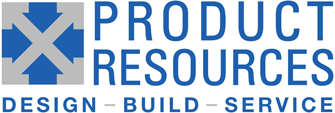They say if it’s not written down, it doesn’t exist. So, everything needs to be documented.
But just as important as the documentation itself is the way you organize and update your documents so you always know you have the latest version.
But just as important as the documentation itself is the way you organize and update your documents so you always know which is the latest document, and which documents are being revised.
One of the important features of a manufacturing system is having control of the documentation that is used to manufacture the product. This documentation includes every document used in manufacturing:
- Component specification documents
- Custom component drawings (Sheet Metal detail, Machined Part detail, Molded Part detail, etc.)
- PCBA documentation
- Etc.
- Assembly drawings and procedures
- Test procedures
- Checklist forms
- FAT forms (Factory Acceptance Test)
- Manufacturing Process Control documents
- SOP – company standard operating procedures (e.g., ESD Control Plan, Kitting Procedure)
- QMS documents – quality management system
These documents have a few important features beyond the information they convey:
- Title – to aid in finding the document
- Document Number – a unique code which identifies the document and traces it through the ERP and QMS systems
- Document Revision – a number or letter designation which identifies the revision of the document.
- Authorizing signature or other indication that the document is approved for manufacturing.
The information in a document is the purpose for the document, but the document’s meta-data, the Document Number and Revision is what shows that the information about to be used is the exactly correct version of the information. If there are multiple revisions of an assembly procedure, say, revisions A, B, and C, it is always the latest one (C) that is used for new production builds. There can be only one version of a document at Rev C. If you must ask if you have the latest version of the Rev C document, you’re doing it wrong; moreover, calling something the ‘latest version’ can prove to cause problems in Production. Engineering could be referencing a document that is the ‘latest version’, while Production has a completely different ‘latest version’ that conveys different information that could impact product. Revision control aligns all stake holders related to a document.
Engineering Models
With almost all documents, there is a file or database behind the document. An assembly drawing may be published as a PDF (portable document format), but there is a drawing behind that PDF that is linked to the solid model of the product. The solid model (for mechanical parametric CAD programs) is the database which contains the assembly definition. It is not used directly in production, but it too must have version control. For electrical assemblies like a PCB, there is artwork (e.g., Gerber photo plots, or a programming file like ODB++) which is the output sent to the supplier to manufacture the PCB and populate the components. Behind this is the database of the PCB, be it in PADS, Eagle, OrCad, Altium, or some other PCB layout program. An assembly or test procedure may be developed in Microsoft Word; the Word document is the master file, and the PDF is the output for manufacturing.
Another subtlety of the control of engineering models is the authority and responsibility for maintaining the model. As improvements are implemented, only one group can have the authority to update the model. If two different organizations are updating separate models for the same product, control of the model may be lost. Consequences of this could be that changes thought to be implemented are not, or models are “broken” and must be rebuilt – a time consuming process that must then be reviewed for accuracy again.
Changes to documentation
There is a process for updating drawings, procedures and other documentation that is being used in manufacturing. That process is called variously an Engineering Change Order (ECO), Engineering Change Notice (ECN), or similar term. It’s not that engineering is the only group that may update a document, but it is the group that is updating most documents. Anything to do with product design, specifications or process is handled through engineering. The quality group or management may implement their own changes to documentation, but it is all done through the Engineering Change system.
This process also identifies one or more approval steps before a document may be released. This ensures there is adequate review of the documents to catch errors before release. It does not matter who writes or updates a document, it is vital that a second set of eyes has a look at the document before release to be sure all changes have been properly implemented or that all possible impacts have been considered. As an example, consider a product with a specific power entry module. If the product is regulatory marked for CE, there is typically a regulatory listing report that documents this component as being a critical component for safety and therefore cannot be altered or re-specified without regulatory review. Engineering may want to change the component for several reasons but be unaware the listing report controls that particular component and other actions need to take place for the change can occur.
